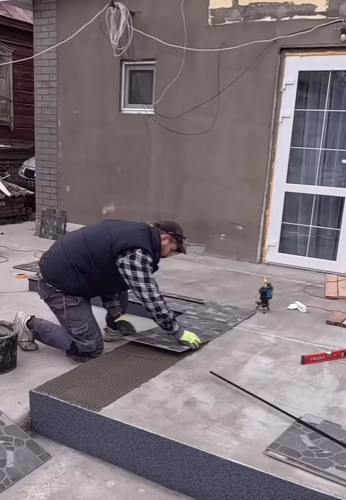
Renovating a room is one of the most rewarding home improvement projects you can undertake. Whether you’re updating an outdated space, customizing a new look, or improving functionality, proper preparation is the foundation for a successful transformation. Without it, even the best renovation ideas can lead to frustration, delays, or budget overruns. This article explores the essential steps you need to take before starting a room renovation, helping ensure your project runs smoothly and efficiently from start to finish.
1. Define Your Vision and Goals
Before picking up a hammer or paintbrush, take time to think about what you want to achieve. Are you looking to modernize a bedroom, create a cozy home office, or turn your basement into a guest suite? Be specific. Make a list of priorities—this might include increasing storage space, improving lighting, upgrading flooring, or reconfiguring the layout.
It helps to gather inspiration from online platforms like Pinterest, home design websites, or magazines. Create a mood board to visualize your color scheme, furniture style, textures, and features. Having a clear vision ensures that every decision made during the process aligns with your final goal.
2. Set a Realistic Budget
Budgeting is a crucial part of the preparation phase. Determine how much you’re willing to spend and break it down into categories such as materials, labor, furniture, permits, and a contingency fund (usually 10–15% of the total budget for unexpected costs). Avoid underestimating the costs—renovations often include hidden expenses like plumbing issues, electrical upgrades, or structural fixes.
If you’re hiring professionals, get multiple quotes and compare services. Make sure every estimate includes a detailed list of what’s covered to avoid surprises later.

3. Make a Renovation Plan
Once your vision and budget are in place, develop a timeline. Will you renovate everything at once, or take it in stages? If you’re doing it yourself, factor in your availability. For hired contractors, ensure their schedule aligns with yours.
Decide on the order of tasks. For example, structural work or electrical rewiring should come before painting or flooring. Installing cabinets should follow painting, and flooring is often installed after all the dust-producing tasks are done.
Create a checklist of everything needed for the project—from permits to paint brushes. Having a well-thought-out plan helps keep the renovation organized and on track.
4. Gather Necessary Permits and Permissions
Depending on the scale of your renovation, you might need permits, especially if you’re moving walls, altering plumbing, or upgrading electrical systems. Check with your local municipality or building authority to understand what’s required.
If you live in a condo or a rental unit, additional permissions might be needed from property managers or landlords. Skipping this step can lead to fines or having to undo completed work.
5. Hire the Right Professionals (If Needed)
Some parts of a renovation require licensed experts. If your project involves plumbing, electrical systems, HVAC, or major structural changes, you’ll likely need professional assistance. When hiring, ask for referrals, read online reviews, and check credentials.
Good communication is vital. Ensure the contractor understands your vision and timeline. A written contract outlining work to be done, cost estimates, and payment schedules can protect both parties.

6. Measure Everything
Accurate measurements are essential. Measure your space multiple times to confirm dimensions, especially if you’re ordering custom furniture, cabinetry, or flooring. Ensure that any new furniture or appliances will fit through doorways and hallways and work with your room’s layout.
Consider taking photos and sketching floor plans. There are also free or low-cost home design apps that can help visualize how everything will fit together.
7. Clear Out the Room
Renovation can get messy. Before the work begins, remove everything from the room. This includes furniture, decorations, curtains, and electronics. If you’re short on space, rent a temporary storage unit or use a spare room.
Protect items that are too large or fragile to move with plastic sheets or drop cloths. If your renovation includes sanding or demolition, seal off the room with plastic sheeting to prevent dust from spreading to the rest of your home.
8. Address Safety and Comfort
Safety during renovation is crucial. Make sure the work area is well-ventilated, especially if you’ll be using paints or adhesives. Use proper gear—gloves, masks, and safety glasses—when necessary.
If the renovation is noisy or disruptive, consider relocating temporarily, especially if young children or pets are involved. If staying put, try to isolate the renovation area and create a clean space elsewhere in the house to relax and unwind.

9. Order Materials in Advance
Once you’ve finalized your design and measurements, start ordering materials—paint, tiles, flooring, lighting, hardware, etc. Do this early to account for delivery times and potential delays. Waiting until the last minute can throw your schedule off track.
When your materials arrive, inspect everything. Make sure the colors, sizes, and quantities are correct and that there’s no damage. It’s better to handle any issues now than when you’re in the middle of installation.
10. Prepare Emotionally and Mentally
Even the most well-planned renovation can be stressful. There might be delays, unexpected problems, or temporary inconveniences. Mentally preparing yourself for the mess, noise, and occasional setbacks can help you stay patient and focused.
Remind yourself that the disruption is temporary and that the result will be worth it. Keep your end goal in mind, and don’t be afraid to make small changes along the way if something doesn’t feel right.

Final Thoughts
Room renovation can breathe new life into your home, adding style, comfort, and value. But the secret to a smooth and successful makeover lies in the preparation. By planning carefully, setting a realistic budget, organizing your timeline, and anticipating challenges, you set the stage for a renovation that’s both efficient and satisfying.
Take the time to get things right before you begin. Think of preparation as the groundwork that supports the entire project—just like a strong foundation supports a building. With the right start, your room renovation journey can be a truly enjoyable and rewarding experience.



